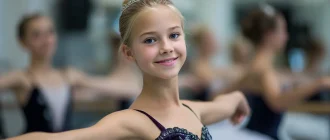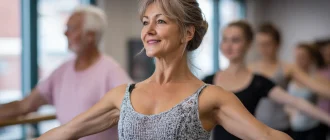Maintaining a good relationship with your ballet teacher is key to your success. Saying the wrong thing, especially when working with young kids, can hinder your progress and create tension. This article will show you what not to say to your ballet teacher, helping you avoid common pitfalls and keep your training on track.
Graceful Insights
- Using positive affirmations like ‘yes, I can’ fosters resilience and growth in ballet students.
- Respecting your teacher and their methods enhances the learning environment and helps you appreciate the journey of mastering ballet.
- Staying engaged throughout class and embracing all exercises ensures a strong foundation and continuous improvement in your dance skills.
Art de Podcast
“I Can’t Do This”
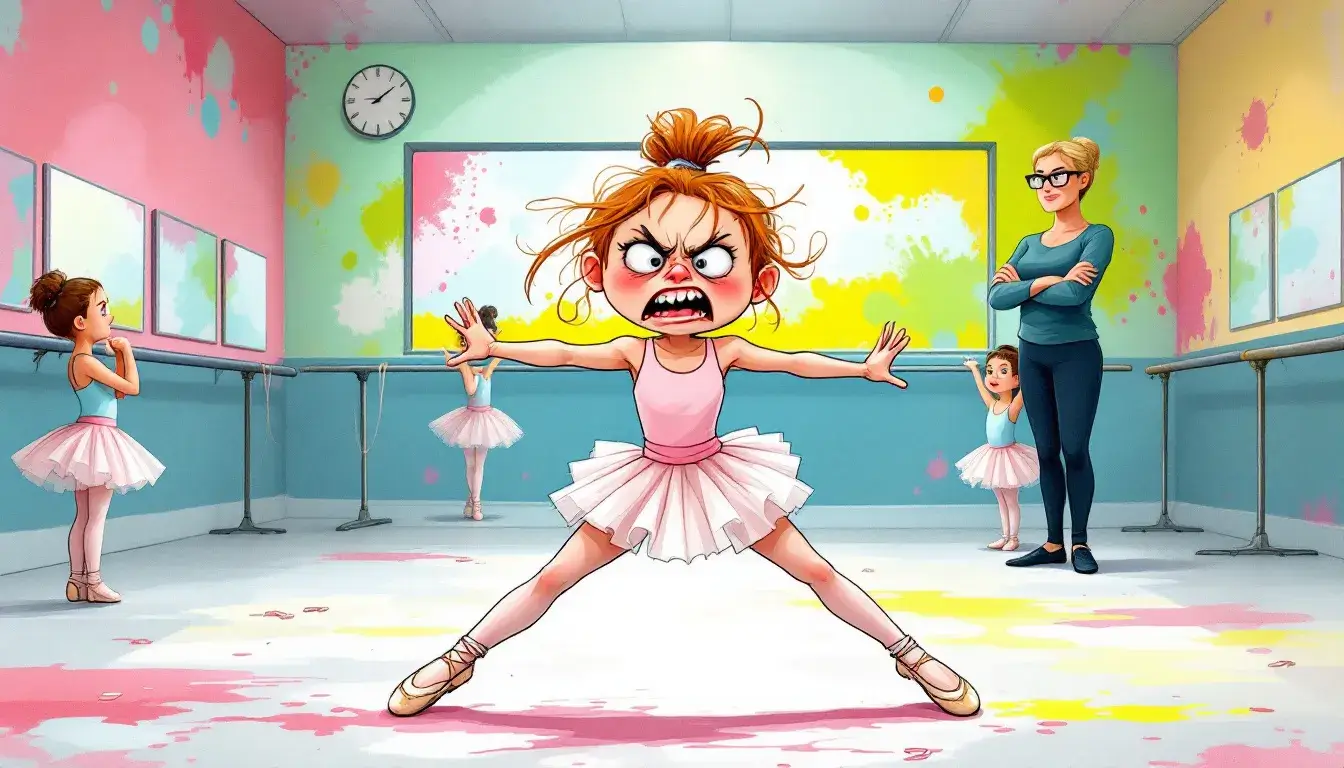
In ballet, facing challenges is part of the learning process. When a child or adult dancer says, “I can’t do this,” it can create a mental block that hinders progress. It’s like pulling a curtain on your world potential, particularly in school. Instead, use positive affirmations such as “Yes, I can” to combat self-doubt and foster a growth mindset. This shift in attitude can significantly affect your development as a dancer.
Dancers develop resilience by learning to cope with mistakes and setbacks during their training. Imagine a young girl in a challenging moment, overwhelmed by a difficult routine. Focusing on herself and using positive affirmations helps her build confidence and overcome self-doubt. Parents and teachers play a crucial role in encouraging this mindset, helping their children see that perseverance leads to improvement.
In child ballet classes, parental support and communication are crucial. Parents should respect the teacher’s expertise and decisions regarding their child’s progression in ballet, as comments or questions can sometimes lead to misunderstandings about the teacher’s role and the discipline required in ballet training.
Telling themselves “no” produces negative outcomes that hinder dancers’ progress. Think of it as putting up a barrier that stops you from reaching your full potential. Saying “yes” to challenges helps dancers gain confidence and overcome self-doubt. Embracing difficulties and viewing them as growth opportunities is key. This mindset is crucial for both children and adults in their ballet journey.
So, next time you or your child feels like saying “I can’t do this,” remember the power of positive affirmations and the importance of resilience. It’s not just about dancing; it’s about building mental toughness and hope to face any challenge that comes your way.
“This is Boring.”
Expressing boredom in ballet class shows a lack of respect for the teacher’s hard work and dedication. Imagine putting in hours of effort to create a lesson plan, only to hear a student dismiss it as boring. It’s disheartening for the teacher and hurts the overall learning environment. Talking about boredom can spread like wildfire, dampening the enthusiasm of the entire class.
Female students, in particular, may face challenges related to body image and the pressure to conform to certain weight standards. It’s important to foster a supportive environment to prevent issues like disordered eating.
Mastering dance techniques requires patience and commitment. Ballet is an art form where even the most basic movements must be practiced repeatedly to achieve perfection. Watching and learning from these repetitive exercises can sometimes seem tedious, but it’s crucial for developing the muscle memory and discipline required for more complex routines. It’s about finding the fun in the fundamentals and appreciating the journey, not just the destination.
Reframing your mindset and viewing each exercise as a stepping stone to improvement helps avoid boredom. Embrace the process and trust that every small effort contributes to your growth as a dancer, helping you create your own story. Remember, ballet is vast and full of opportunities to learn and excel. Your dedication and positive attitude can significantly impact your progress and enjoyment of the art form.
“Why Are We Doing This?”
Trusting your teacher’s approach fosters a productive class atmosphere and encourages learning. Questioning the purpose of exercises can diminish the teacher’s credibility and disrupt the learning environment. A classroom where students constantly doubt teachers’ methods becomes chaotic and counterproductive. Solid teacher-student trust enhances the learning experience and helps students focus on growth.
Sometimes, teachers may focus their attention, either positively or negatively, on specific students. Recognizing patterns of behavior directed at these individuals, such as bullying or favoritism, and addressing this is important for maintaining a fair and supportive learning environment.
Questioning the reasoning behind exercises leads students to doubt the teacher’s method and expertise. Understanding that every exercise has a purpose, whether building strength, improving technique, or enhancing flexibility, is essential. Openly challenging the purpose of exercises disrupts class dynamics and diminishes respect for authority, which is never good. A clear understanding of goals and processes from the teacher enhances students’ self-esteem and mastery of dance skills.
Effective communication of class objectives reinforces students’ motivation and confidence in their abilities. Engaging with the teacher’s rationale strengthens the relationship and promotes accountability. It’s about creating an environment where students feel supported and understood. Trusting the process and the teacher’s expertise allows students to focus on their growth and development.
So, rather than asking, “Why are we doing this?” try approaching each exercise with an open mind and a willingness to learn. Trust that your teacher has your best interests at heart and that every exercise is a building block towards your success in ballet.
“That’s Not How My Other Teacher Taught It”
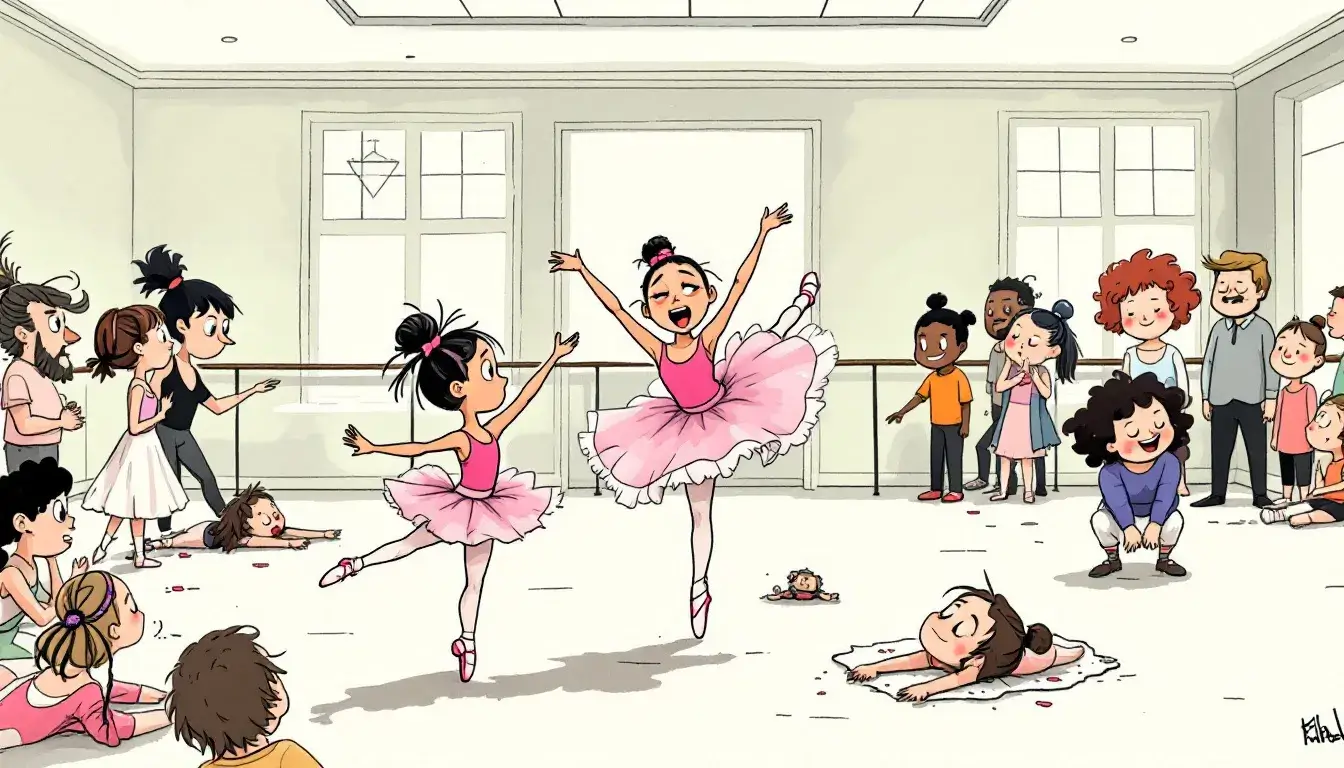
Comparing teachers can be counterproductive and can undermine the current teacher’s efforts. Each dance teacher brings their unique style and expertise to the classroom, and it’s essential to be open to different teaching methods. Imagine how a ballet teacher feels when one student constantly compares their teaching to that of another. It can be disheartening and disruptive to the learning environment.
If one student is experiencing difficulties with a teacher’s methods, other students are likely to as well. Reaching out to peers for support and shared experiences can help alleviate feelings of isolation.
Dance teachers often ask students to watch during class to help them understand missing dance steps or choreography. It’s an opportunity to learn from different perspectives and refine your technique. Acknowledging that even familiar skills can be improved encourages dancers to refine their technique continually. This mindset is crucial for growth and development in ballet.
Respecting the different approaches of each teacher can enrich your learning experience. It’s about appreciating the diversity in teaching styles, much like what you’ll find in college, and understanding that ballet has no one-size-fits-all method. By being open to new ways of learning, you can enhance your skills and become a more versatile dancer.
When you feel like saying, “That’s not how my other teacher taught it,” reflect on the value of diverse teaching methods. Embrace the opportunity to teach something new and see how it can positively impact your dance journey.
“I Already Know This”
Repetitive practice in classical ballet is essential for mastering technique and developing discipline. When a dancer says, “I already know this,” they may miss out on the opportunity to refine their skills and deepen their understanding. Ballet training emphasizes that results are directly linked to the effort and time invested by the dancer. It’s about realizing that even the most basic movements can always be improved with practice.
A dancer’s humility allows them to remain open to feedback and refinement, essential for skill growth. Imagine a student who thinks they know everything; they might miss valuable advice and insights from their teacher. Ballet is a nurturing environment where dancers develop resilience and self-confidence by facing challenges. It’s about staying present and being willing to learn, no matter how familiar the material may seem.
So, the next time you think, “I already know this,” take a step back and consider how you can further refine your technique. Embrace the practice with an open mind and a willingness to improve. The truth is, mastery comes from continuous learning and dedication.
“I’m Too Tired”
Maintaining energy in dance classes is crucial, as persistent fatigue can impair performance quality and increase injury risk. It’s natural to feel tired after a long day, but expressing it can create a negative atmosphere in the classroom. Instead, focus on recovery strategies such as proper nutrition, active recovery methods, and psychological distractions to manage fatigue effectively.
Through consistent repetition, dancers can prevent injuries and maintain steady progress alongside their peers. Imagine entering a dance room feeling exhausted; finding ways to re-energize and stay motivated is vital. Talk to your teacher if you’re genuinely struggling, but try to avoid using tiredness as an excuse to hold back.
Remember, every dancer experiences fatigue at some point. Managing fatigue effectively helps you perform at your best and progress in your ballet journey. So the next time you feel too tired, focus on the strategies that can help you push through and stay committed to your practice.
“Can We Skip This Part?”
Commitment to every exercise is crucial since each part of the lesson builds strength and technique. When students are asked to skip parts of the lesson, it can create gaps in their skills and understanding, ultimately stunting their overall growth. If a child consistently skips warm-ups, they may develop bad habits and struggle with more complex movements later. Every exercise in a dance class, regardless of age, is designed to strengthen specific muscles and improve technique, making them essential for progress.
Neglecting certain exercises can lead to gaps in skills and understanding, ultimately stunting a dancer’s overall growth. Skipping exercises can create bad habits and limit dancers’ ability to execute more complex movements later. Consistent participation in all lesson components helps enhance muscle memory and improve performance consistency.
By committing to every part of the lesson, dancers can ensure they are building a strong foundation for their skills. It’s about seeing the value in each exercise and understanding that every movement has a purpose. By adopting this mindset, dancers can experience significant improvements in technique and overall performance.
So, rather than asking to skip parts of the lesson, embrace each exercise as an opportunity to grow and improve. Remember, every step in your ballet journey contributes to your success.
“When Will Class End?”
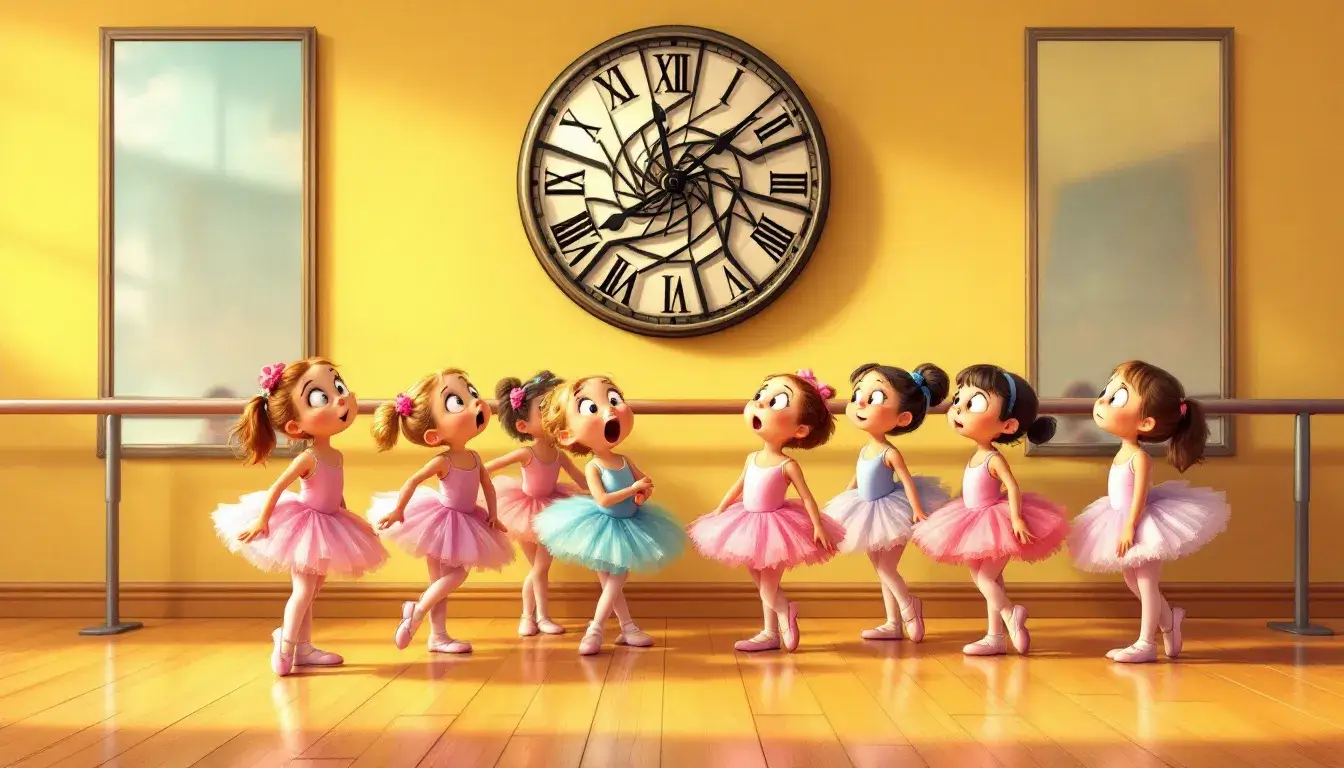
Inquiring about the end of class can signal a lack of engagement and disrespect towards the teacher’s efforts. It’s like saying you have somewhere better to be, which can be disheartening for the teacher who has put time and effort into planning the lesson. Questioning the class duration, especially if it happens every week, disrupts the learning flow and hinders progress.
Maintaining focus and participation throughout class is essential for personal development and the overall learning environment. Students are encouraged to fully engage with the material, which can deepen their understanding and appreciation of the subject. Being attentive during class fosters a more respectful teacher-student relationship.
So, stay present and engaged throughout the lesson instead of asking when the class will end. Trust that the time spent in class is valuable and contributes to your growth as a dancer. Your dedication and focus will pay off in the long run.
“This Music is Annoying.”
Understanding the teacher’s music choices is key to appreciating the learning environment in ballet classes. Expressing annoyance with the music creates a negative atmosphere and disrupts the flow of the lesson. Respecting the music selected by teachers fosters a positive atmosphere and encourages openness to diverse musical styles.
Students can draw inspiration from the various music genres played during class, which enhances their creativity and adaptability. Imagine discovering a new genre of music that you end up loving, all because you were open to the teacher’s choice. Dancers can draw motivation from various musical styles presented during ballet lessons.
Next time you feel annoyed by the music, see it as an opportunity to expand your musical horizons and find new inspiration. Embrace the diversity and let it enhance your dance spirit.
| ❌ What Not to Say | ⚠️ Why It’s Problematic | ✅ Better Approach |
|---|---|---|
| “When is class over?” or “Is it almost done?” | Implies disinterest and disrespects the teacher’s effort. | Stay engaged; trust the teacher to manage time. |
| “I’m tired” or “I’m hungry” | Shifts focus from learning and may seem like an excuse. | Prepare adequately before class; maintain professionalism. |
| “Can I get a drink?” (repeatedly) | Disrupts class flow and may indicate a lack of preparation. | Bring a water bottle and hydrate during appropriate breaks. |
| “I don’t get it” (vaguely) | Lacks specificity, making it hard for the teacher to assist. | Ask targeted questions, e.g., “Could you clarify the arm movement?” |
| “Am I doing this right?” (constantly) | Seeks constant validation, which can disrupt class rhythm. | Trust the teacher to provide corrections; focus on self-assessment. |
| “When do I get pointe shoes?” | Pressures the teacher and overlooks readiness factors. | Focus on technique; trust the teacher’s judgment on progression. |
| “This is too easy for me.” | Appears dismissive and may undermine the teacher’s plan. | Seek depth in technique; ask how to challenge yourself within the exercise. |
| “I can’t” | Demonstrates a defeatist attitude, hindering progress. | Adopt a growth mindset; say, “I’ll keep working on it.” |
| “Watch me!” (demanding attention) | Disrupts class and may seem attention-seeking. | Perform earnestly; trust the teacher to observe and provide feedback. |
| “Can you come in early to teach me what I missed?” | Assumes the teacher’s availability without consideration. | Review the missed material independently and ask for brief clarification if needed. |
Resume
Throughout this blog post, we’ve explored the common phrases to avoid in your ballet classes and why they matter. From managing self-doubt, common in third grade, to maintaining energy levels, each tip is designed to help you navigate your ballet journey with grace and determination. Remember, every word you say can impact your progress and the learning environment.
You can make significant strides in your ballet journey by staying engaged, respectful, and open to learning. Embrace the challenges, trust your teachers, and remain committed to your practice. Your dedication and positive attitude will lead to success in this beautiful art form.
Frequently Asked Questions
Why should I avoid saying “I can’t do this” in ballet class?
Avoiding “I can’t do this” in ballet class is key, as it can create mental blocks that stall your progress. Instead, try using positive affirmations to boost your confidence and resilience.
What should I do if I find a ballet class boring?
If you find a ballet class boring, try to shift your mindset by viewing each exercise as a valuable step toward improving your skills. Embrace the journey and the patience it takes to master the techniques!
Why is it important to trust my ballet teacher’s methods?
Trusting your ballet teacher’s methods is crucial because it creates a positive class environment and boosts learning. Doubting their techniques can disrupt your focus and hinder your progress.
How can I manage fatigue in dance classes?
To combat fatigue in dance classes, prioritize proper nutrition, incorporate active recovery techniques, and find psychological distractions to keep your energy up. Staying mindful of these strategies will help you feel more vibrant and engaged during your sessions, just like it would for your daughter.
Why should I respect the music choices in ballet class?
Respecting the music choices in ballet class helps create a positive atmosphere and opens you up to new styles that can enhance your overall dance experience. Embracing this diversity will only benefit your growth as a dancer.
Frequently Asked Questions
How should I address my ballet teacher at the start and end of class?
Use a simple “Good morning/afternoon, Ms. or Mr.” followed by their surname when greeting them, and finish class with a polite curtsy or bow and “Thank you, teacher.” Consistent, formal courtesy sets a respectful tone for the entire studio.
Is it appropriate to ask questions during barre or centre combinations?
Yes—briefly and only when it prevents injury or major confusion. Wait for a natural pause, phrase the question concisely, and focus on clarifying the movement rather than challenging the correction.
What’s the best way to tell my teacher I’m injured or in pain?
Inform them privately before class begins. Describe the limitation and ask if modifications are possible. Never push through pain in silence; teachers appreciate honesty because it helps them keep you safe.
How early should I arrive, and what if I’m late?
Aim to be warmed up and ready 15–20 minutes before the scheduled start. If unavoidable lateness occurs, wait at the studio door until the teacher invites you in to avoid disrupting the class in progress.
What attire is considered respectful in a ballet class?
Clean tights, fitted leotard, and properly secured hair are standard. Adult programs may allow more flexibility, but clothes should reveal alignment and remain free of loud logos, jewelry, or dangling drawstrings.
Is filming the class acceptable for practice purposes?
Only with prior permission from both the teacher and the studio. If allowed, restrict recording to your work, keep devices silent, and avoid sharing footage publicly without explicit consent.
How can I ask for extra help or private coaching without seeming demanding?
Schedule a brief conversation outside class time—email or front‑desk request is ideal. Express specific goals, ask about available slots and fees, and respect the teacher’s schedule if they decline or propose another solution.
What’s the etiquette for communicating with teachers on social media or by text?
Follow the studio’s official channels first. Use email or front‑desk messaging for logistics. Personal texting or friend requests can blur professional boundaries; keep digital communication courteous, concise, and class‑related.
How should I respond when corrections feel harsh or like “tough love”?
Remember, the correction targets the movement, not you as a person. Acknowledge the note with a nod or “Thank you,” apply it immediately, and reflect on how it can advance your technique.
Can I leave early if the class runs overtime?
If you have a hard stop, inform the teacher before class begins. Politely excuse yourself at the agreed time without drawing attention. Avoid checking the clock or announcing that class is over.
What’s the protocol for conflicting techniques between different teachers?
Adopt a “studio neutral” mindset: follow the current teacher’s style. At the same time, they note differences in a journal in their class and ask for clarification outside class rather than debating methods mid‑lesson.
Is talking to classmates during class acceptable?
Keep conversation to a minimum—usually “Thank you” after partnering or a quick safety warning. Extended chatting distracts everyone and signals a lack of focus.
How do I show appreciation after a performance exam or recital?
A handwritten note and a small, non‑intrusive gift—such as flowers or a studio‑friendly snack—are appropriate. Monetary gifts or lavish items can create discomfort and are best avoided unless the studio has clear guidelines.
Should parents discuss student progress with the teacher during class transitions?
Prefer scheduled conferences or email. Hallway conversations can delay the next class and pressure the teacher for snap judgments. Respect designated communication times for detailed feedback.
What’s the correct way to ask permission to try pointe work or advanced levels?
Request a formal evaluation, highlighting consistency in attendance, strength metrics, and any pre‑pointe training you have completed. Then patiently await the teacher’s assessment rather than lobbying during class.
Is chewing gum or bringing snacks into the studio ever acceptable?
No. Gum poses choking hazards and looks unprofessional, while food can damage the floor. Hydration with a closed bottle is acceptable, but should be taken during designated water breaks.
How can adult beginners avoid feeling out of place among younger dancers?
Focus on personal goals, maintain a growth mindset, and model professional behavior. Many studios view adult students as role models when they arrive prepared, listen closely, and work with quiet determination.
What should I do to correct a music tempo or count?
Politely raise your hand at the end of the demonstration and ask, “Could we confirm the count starting at…?” Framing it as a clarification, not a complaint, keeps the atmosphere collaborative.
Is it acceptable to wear warm‑ups during class?
During the initial barre, lightweight warm‑ups can be useful, but remove them once the body is warm—usually after pliés—unless the teacher specifies otherwise. This allows for more accurate alignment feedback.



